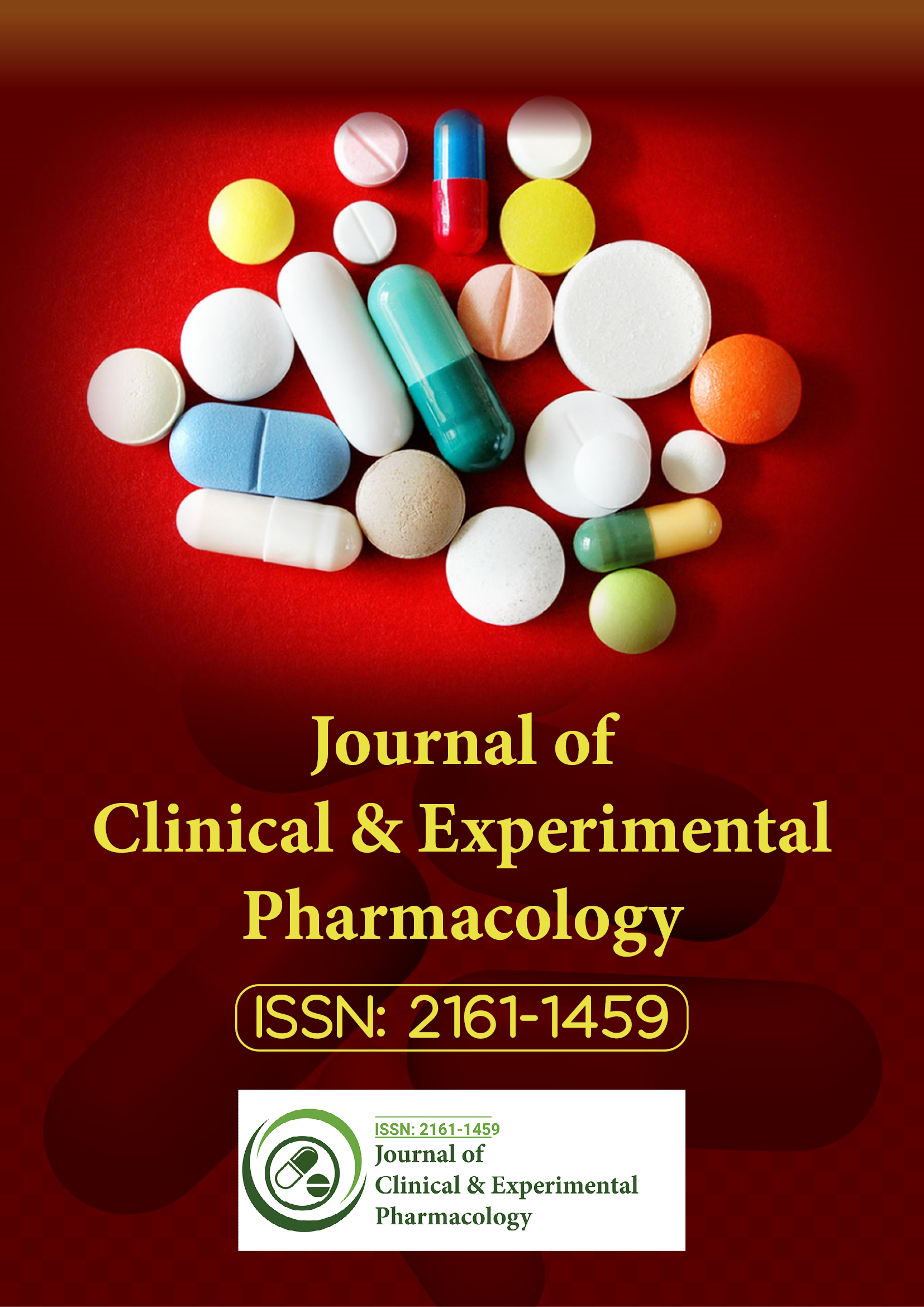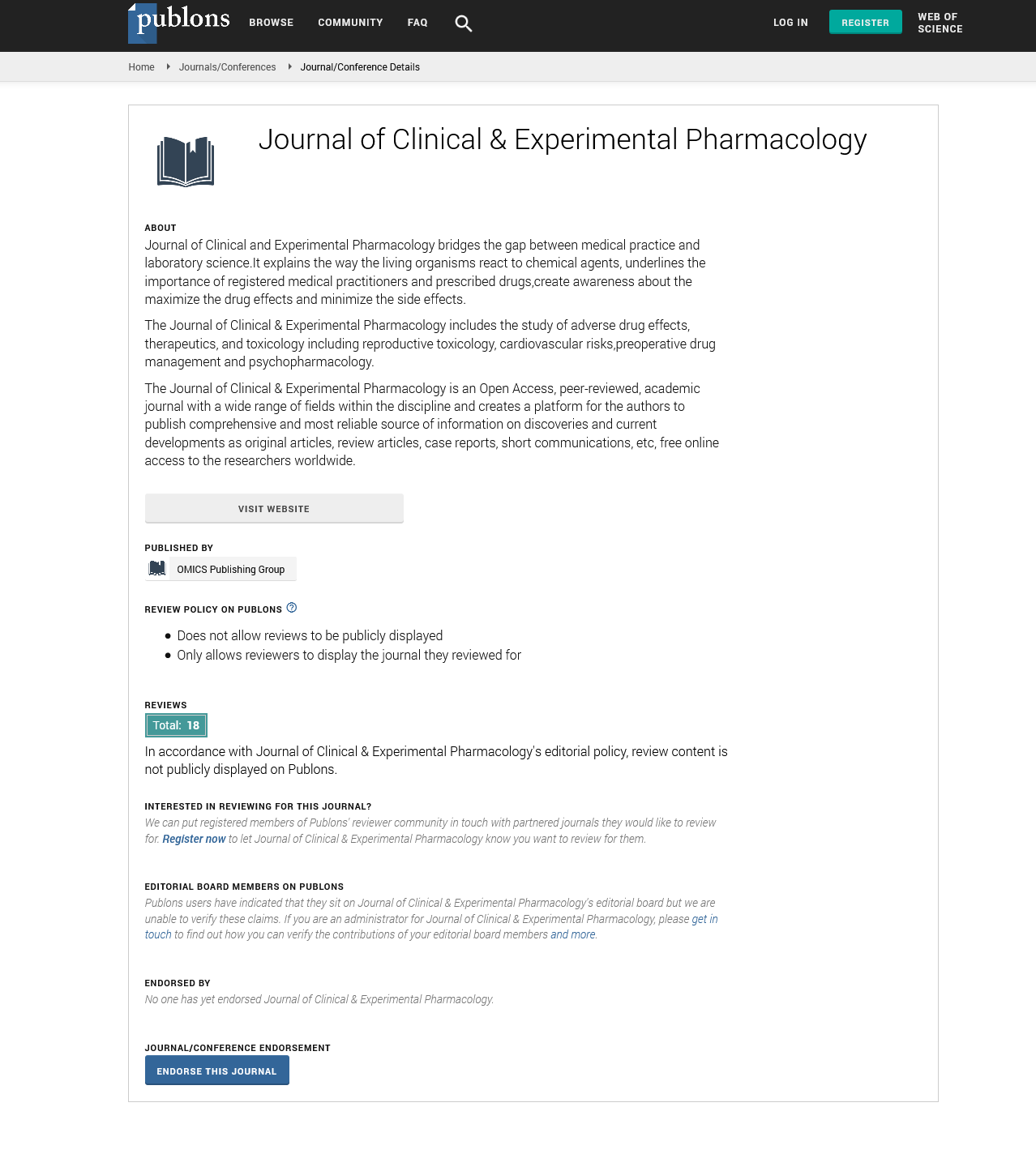Indexed In
- Open J Gate
- Genamics JournalSeek
- China National Knowledge Infrastructure (CNKI)
- Ulrich's Periodicals Directory
- RefSeek
- Hamdard University
- EBSCO A-Z
- OCLC- WorldCat
- Publons
- Google Scholar
Useful Links
Share This Page
Journal Flyer

Open Access Journals
- Agri and Aquaculture
- Biochemistry
- Bioinformatics & Systems Biology
- Business & Management
- Chemistry
- Clinical Sciences
- Engineering
- Food & Nutrition
- General Science
- Genetics & Molecular Biology
- Immunology & Microbiology
- Medical Sciences
- Neuroscience & Psychology
- Nursing & Health Care
- Pharmaceutical Sciences
Commentary - (2025) Volume 15, Issue 3
Clinical Applications and Challenges of Monoclonal Antibodies in Biopharmaceutical Development
Sarah Louisa*Received: 06-Jun-2025, Manuscript No. CPECR-25-29365; Editor assigned: 09-Jun-2025, Pre QC No. CPECR-25-29365 (PQ); Reviewed: 23-Jun-2025, QC No. CPECR-25-29365; Revised: 30-Jun-2025, Manuscript No. CPECR-25-29365 (R); Published: 07-Jul-2025, DOI: 10.35248/2161-1459.25.15.481
Description
Monoclonal antibodies have transformed the treatment landscape across a wide range of therapeutic areas including oncology, autoimmune disorders, infectious diseases and cardiovascular conditions. Their ability to bind specifically to target antigens has allowed for the development of therapies that are both selective and effective. As a class of biopharmaceuticals, monoclonal antibodies now account for a significant portion of the global biologic drug market, with continued innovation driving the development of next-generation molecules.
The mechanism of action of monoclonal antibodies involves highly specific interactions with target proteins or receptors on the surface of cells. This specificity permits either direct neutralization of pathogenic molecules or recruitment of immune cells to eliminate diseased cells. In oncology, monoclonal antibodies have been designed to bind tumor-associated antigens, leading to immune-mediated killing or inhibition of tumor growth. Rituximab, which targets CD20 on B cells, was among the first to demonstrate success in hematologic malignancies and continues to be used in various lymphomas and autoimmune diseases.
Checkpoint inhibitors such as pembrolizumab and nivolumab have further expanded the role of monoclonal antibodies in cancer therapy. By targeting proteins like PD-1 and CTLA-4 that regulate immune response, these drugs restore the ability of T cells to attack tumor cells. This immunomodulatory approach has achieved durable responses in cancers previously considered resistant to therapy, including melanoma, non-small cell lung cancer and renal cell carcinoma.
In autoimmune diseases, monoclonal antibodies target pro-inflammatory cytokines or immune cell receptors involved in disease progression. Agents such as adalimumab and infliximab inhibit Tumor Necrosis Factor-alpha (TNF-α) and have shown benefit in rheumatoid arthritis, inflammatory bowel disease and psoriasis. Similarly, IL-6 and IL-17 inhibitors have emerged as effective treatments in diseases like systemic lupus erythematosus and ankylosing spondylitis. The advantage of monoclonal antibodies in these contexts is their ability to interfere with specific pathways while sparing broader immune functions.
Monoclonal antibodies have also gained approval for infectious diseases. Palivizumab is used prophylactically to prevent respiratory syncytial virus infection in high-risk infants. During the COVID-19 pandemic, antibodies like bamlanivimab and casirivimab-imdevimab were developed to neutralize SARS-CoV-2. These agents provided a therapeutic option for patients at risk of progressing to severe illness, particularly when used early in the disease course. Although viral evolution has limited the long-term use of some antibodies, the speed of development and deployment demonstrated the adaptability of the platform.
The production of monoclonal antibodies involves recombinant DNA technology, where hybridoma or transfected cell lines are used to express humanized or fully human antibodies. Advances in expression systems, purification processes and analytical techniques have improved the consistency and scalability of production. Despite this, manufacturing complexity and cost remain higher than for small-molecule drugs. Cold-chain requirements and parenteral administration routes also contribute to logistical challenges, especially in low-resource settings.
One of the key issues in clinical use is immunogenicity. Even fully human antibodies can induce Anti-Drug Antibodies (ADAs), which may neutralize therapeutic effects or alter pharmacokinetics. Immunogenicity can be influenced by the patient’s immune status, the disease being treated and structural features of the antibody. Strategies to mitigate these responses include careful selection of epitopes, engineering of Fc regions and concurrent immunosuppressive therapy in certain cases.
Pharmacokinetic properties of monoclonal antibodies differ significantly from those of conventional drugs. Due to their size and structure, they typically have long half-lives and are metabolized by cellular degradation pathways rather than hepatic enzymes. This reduces the risk of drug-drug interactions, but variability in tissue distribution and target expression can affect dosing and efficacy. Population pharmacokinetic modeling and therapeutic drug monitoring are increasingly used to optimize dosing regimens.
The development pipeline has also expanded beyond traditional monoclonal antibodies to include bispecific antibodies and antibody-drug conjugates. Bispecific antibodies can bind two different antigens or epitopes simultaneously, enabling novel mechanisms such as redirecting immune cells to tumors. Antibody-drug conjugates combine the specificity of antibodies with the cytotoxic activity of small-molecule agents, enabling targeted delivery of chemotherapy to cancer cells while sparing healthy tissues.
Despite these advances, several limitations persist. The high cost of monoclonal antibody therapies poses a barrier to access in many regions. Efforts to develop biosimilars—biologic products that are highly similar to approved reference drugs—are aimed at reducing costs and increasing availability. Regulatory pathways for biosimilars have been established in multiple countries, with a growing number of products entering the market, particularly in oncology and rheumatology.
Clinical trial design for monoclonal antibodies must address specific challenges, including the identification of reliable biomarkers for patient selection, management of infusion-related reactions and long-term safety assessment. Post-marketing surveillance is essential to detect rare adverse effects that may not be evident in pre-approval studies. Continued investment in pharmacovigilance and real-world evidence generation is necessary to understand the full risk-benefit profile of these agents.
In conclusion, monoclonal antibodies have reshaped the treatment paradigm in multiple disease areas, offering new options for conditions with limited therapeutic alternatives. Their specificity, versatility and expanding applications have made them a cornerstone of modern biopharmaceutical development. While challenges in manufacturing, cost and immunogenicity remain, ongoing innovations such as bispecific constructs and biosimilars are addressing these issues. As research continues to refine antibody engineering and improve patient selection, monoclonal antibodies are poised to remain a central component of clinical pharmacology and therapeutic development.
Citation: Louisa S (2025). Clinical Applications and Challenges of Monoclonal Antibodies in Biopharmaceutical Development. J Clin Exp Pharmacol. 15:481.
Copyright: © 2025 Louisa S. This is an open-access article distributed under the terms of the Creative Commons Attribution License, which permits unrestricted use, distribution and reproduction in any medium, provided the original author and source are credited.

